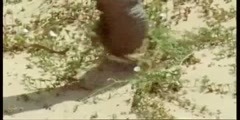Lec 18 - Hometown Boy: Honoring an Emperor's Roots in Roman North Africa
"Lec 18 - Hometown Boy: Honoring an Emperor's Roots in Roman North Africa" Roman Architecture (HSAR 252) Professor Kleiner discusses two Roman cities in North Africa: Timgad and Leptis Magna. Timgad was created as an entirely new colony for Roman army veterans by Trajan in A.D. 100, and designed all at once as an ideal castrum plan. Leptis Magna, conversely, grew more gradually from its Carthaginian roots, experiencing significant Roman development under Augustus and Hadrian. Septimius Severus, the first Roman emperor from North Africa, was born at Leptis and his hometown was renovated in connection with his historic visit to the city. This large-scale program of architectural expansion features the Severan Forum and Basilica and the nearby Arch of Septimius Severus, a tetrapylon or four-sided arch located at the crossing of two major streets. The lecture culminates with the unique Hunting Baths, a late second or early third-century structure built for a group of entrepreneurs who supplied exotic animals to Rome's amphitheaters. Its intimate vaulted spaces are revealed on the outside of the building and silhouetted picturesquely against the sea, suggesting that the bath's owners knew how to innovate through concrete architecture and how to enjoy life. 00:00 - Chapter 1. Timgad: The Ideal Second-Century Colony in Roman North Africa 15:52 - Chapter 2. Leptis Magna in the Age of Augustus 30:00 - Chapter 3. The Augustan Theater and the Hadrianic Baths at Leptis Magna 44:48 - Chapter 4. Septimius Severus Sheathes Leptis in Imported Marble 59:45 - Chapter 5. The Severan Temple and Basilica, the Arch of Septimius Severus, and the Unique Hunting Baths Complete course materials are available at the Open Yale Courses website: http://open.yale.edu/courses This course was recorded in Spring 2009.
Video is embedded from external source so embedding is not available.
Video is embedded from external source so download is not available.
Here is the next lecture for this course
Lec 1 - Introduction to Roman Architecture
42:31 | 3544 viewsLec 10 - Accessing Afterlife: Tombs of Ro ...
01:11:57 | 3217 viewsLec 4 - The Christian Roman Empire
47:56 | 3244 viewsLec 5 - Why Is Africa Different?
01:11:19 | 3064 viewsLec 9 -. The Reign of Justinian
48:47 | 2929 viewsOpening a Roman Coffin
00:00 | 6016 viewsExploring Roots
01:08 | 4648 viewsWild Africa; The birds flying over Cape H ...
00:28 | 5687 viewsSouth Africa's Cape highlands
01:18 | 4360 viewsThe Emperor Tamarin Dysfunctional families
01:06 | 6204 viewsCape Cobra teased by Ground Squirrels in ...
01:51 | 5570 viewsNamib's desert Elephants in Wild Africa
02:35 | 5058 viewsThe Emperor Penguins
04:02 | 3848 viewsAfrica and HIV Prevention
04:20 | 3418 viewsSymphony of Science - Chapter Of Africa
03:59 | 2863 viewsNo content is added to this lecture.
This video is a part of a lecture series from of Yale
Lecture list for this course
Lec 1 - Introduction to Roman Architecture
Lec 2 - It Takes a City: The Founding of Rome and the Beginnings of Urbanism in Italy
Lec 3 - Technology and Revolution in Roman Architecture
Lec 4 - Civic Life Interrupted: Nightmare and Destiny on August 24, A.D. 79
Lec 5 - Lifestyles of the Rich and Famous: Houses and Villas at Pompeii
Lec 6 - Habitats at Herculaneum and Early Roman Interior Decoration
Lec 7 - Gilding the Lily: Painting Palaces and Villas in the First Century A.D.
Lec 8 - Exploring Special Subjects on Pompeian Walls
Lec 9 - From Brick to Marble: Augustus Assembles Rome
Lec 10 - Accessing Afterlife: Tombs of Roman Aristocrats, Freedmen, and Slaves
Lecture 11 - Notorious Nero and His Amazing Architectural Legacy
Lec 12 - The Creation of an Icon: The Colosseum and Contemporary Architecture in Rome
Lec 13 - The Prince and the Palace: Human Made Divine on the Palatine Hill
Lec 14 - The Mother of All Forums: Civic Architecture in Rome under Trajan
Lec 15 - Rome and a Villa: Hadrian's Pantheon and Tivoli Retreat
Lec 16 - The Roman Way of Life and Death at Ostia, the Port of Rome
Lec 19 - Baroque Extravaganzas: Rock Tombs, Fountains, and Sanctuaries in Jordan, Lebanon, and Libya
















